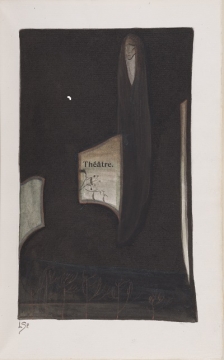Maurice Maeterlinck and Léon Spilliaert
1901-1903
Type:
Model for a book
Material / technique:
Indian ink enhanced by pen, coloured pencils, gouache, pastels and watercolours
Type of acquisition:
Acquired by the Eliane Vercaempt Fund
Year of acquisition:
2022
Depository institution:
Royal Museums of Fine Arts of Belgium, Fin-de-Siècle Museum, Brussels
